- leun's home page
- Posts
- 2013
- 2012
- December (2)
- October (3)
- September (2)
- August (1)
- July (4)
- June (4)
- May (2)
- April (3)
- March (5)
- February (5)
- January (5)
- 2011
- December (3)
- November (3)
- September (5)
- August (2)
- July (2)
- June (3)
- May (4)
- April (4)
- March (2)
- February (4)
- January (2)
- 2010
- December (2)
- November (3)
- October (3)
- September (5)
- August (6)
- July (2)
- June (4)
- May (3)
- April (4)
- March (4)
- February (2)
- January (4)
- 2009
- 2008
- October (1)
- My blog
- Post new blog entry
- All blogs
Run6 FPD bunch counter distribution
Bunch ID 7 bit study for run6 FPD eta analysis
Fig. 1. Energy in the ES FPD vs. Bunch ID 7 bit distribution with no bbc condition
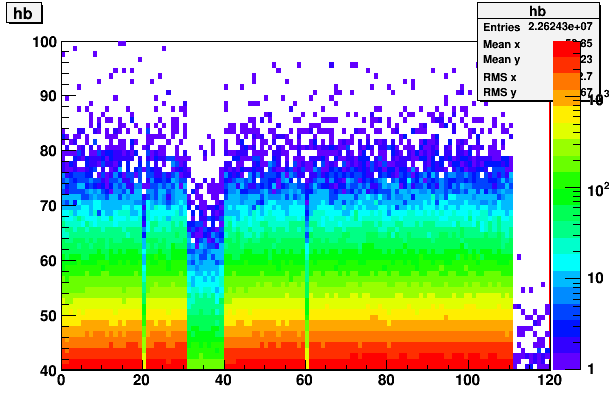
Fig. 2. Energy in the ES FPD vs. Bunch ID 7 bit distribution with west (away side) bbc condition
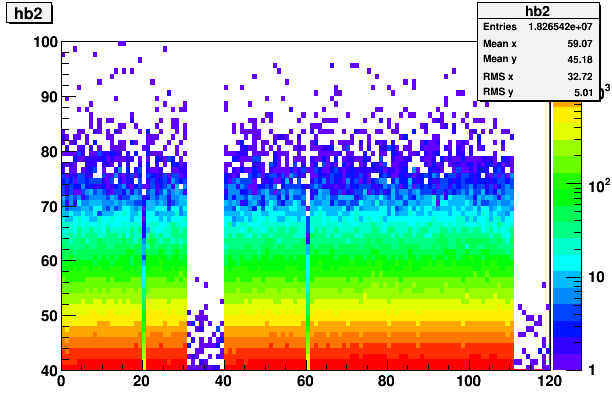
So we clearly see an evidence that the away side bbc does remove beam background events.
I've estimated the fraction of events that are beam background as a function of energy by comparing the number of events in the 9 bunches in the abort gap against 9 bunches in the normal collision region (bunch id 81~89).
Fig. 3. Fraction of events that fail bbc condition (BLACK) and estimated fraction of events that are beam background (RED) for FPD ES
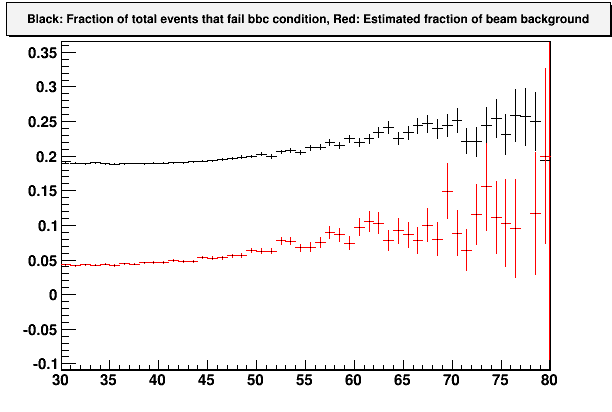
Fig. 3a. Fraction of events that fail bbc condition (BLACK) and estimated fraction of events that are beam background (RED) for FPD EN
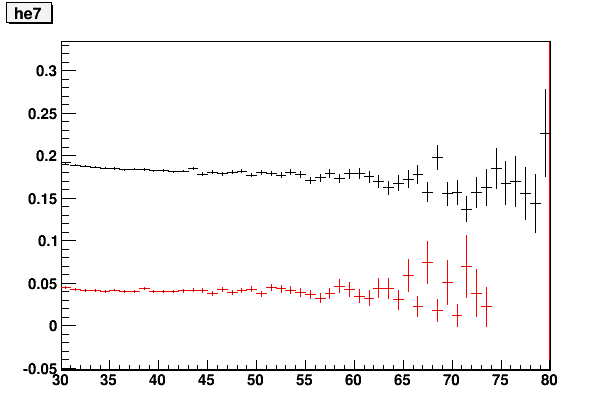
Interestingly, there seems to be slightly more beam background for the ES than the EN. We also know that the ES counting rate is somewhat higher than the EN (I forget the exact number, but it's something like 30%), which has been a mystery of calibration.
In any case, we end up with about ~20% more events when we remove the bbc condition, and I am estimating (assuming that beam background is bunch-independent, which of course may not be true) that the beam background is 5~10% of the total events without the bbc condition. So at high energy, nearly ~40% of the additional events that we gain by dropping the bbc condition might be beam background.
The rest of the gain most likely comes from removing the effect of the BBC inefficiency, which was estimated to be 15~20% of the total events in Fig. 4. of this page.
Fig. 4. BBC inefficiency for non-diffractive events, Pythia only simulation with two different track cuts. (Blue cuts just below the peak)
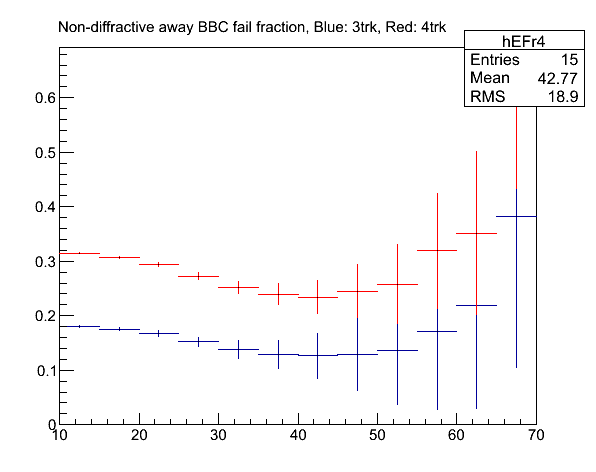
And from our first pion AN / cross-section paper ( PRL 92, 171801 (2004) ),
"The BBC observes 87 ± 8% of the in-elastic, non-singly diffractive cross section."
This is of course for BBC coincidence trigger. It is also not clear at what evergy. The inefficiency for the BBC away side only should be smaller. I have not done a full simulation to know the answer, but this number seems rather smaller than what I would've expected based on the pythia only result.
HOWEVER, Pibero did study of BBC inefficiency based on run 9 data by looking at jet yield with and without BBC condition. The following page shows his findings.
http://cyclotron.tamu.edu/pibero/jets/2010.09.03/
He sees inefficiencies closer to 20~25% range, which could explain what we see in the data.
To recap, for both ES and EN, this is what we see.
Fig. 5.
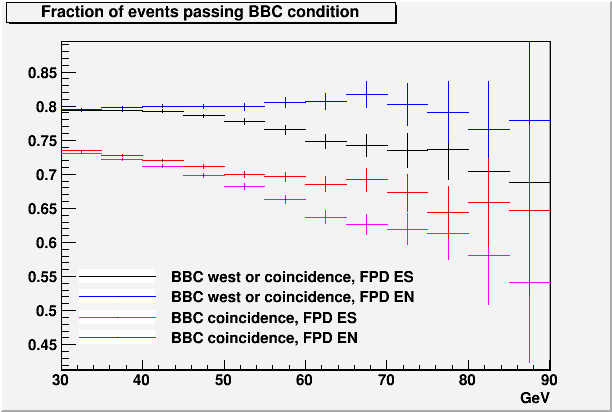
So if we apply the BBC coincidence condition, we lose 25~35% in statistics depending on the energy and the detecctor. The beam background might be about 5~10%, which leaves us with 20~25% extra loss. This is roughly consistent with Pibero's study.
- leun's blog
- Login or register to post comments
